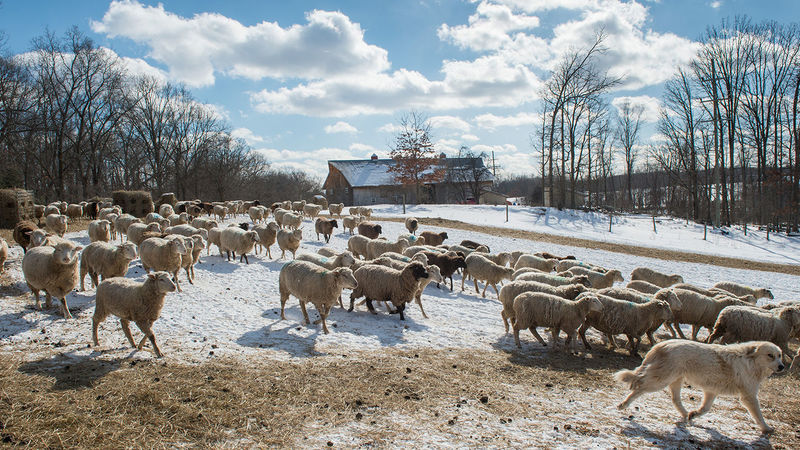Clad in a black, hooded stadium coat, insulated work pants and fleece-lined boots, SuzAnne Akhavan-Tafti ’91M.A. strides across the undulating winter pasture of Full Circle Organic Farm. “Come, baa,” she calls as she approaches a flock of ewes scattered across the leeward side of a gentle rise. “Come, baa.” Almost in unison, 300 heads pop up at the sound of her voice. “They’ll come circle around,” the shepherdess says as she turns her back to the flock. “They’re very curious.” But not quite curious enough on this blustery, December day to divert their attention from the rams in their midst.
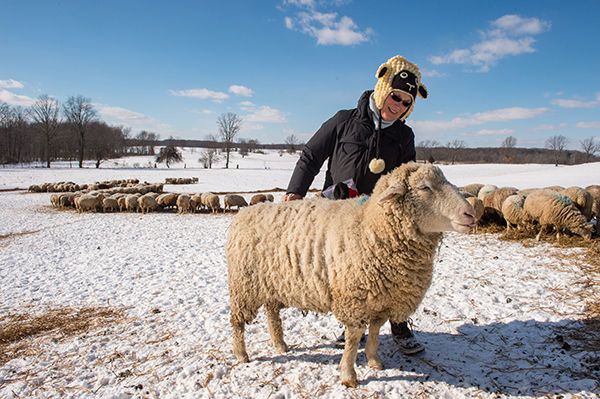
Twenty-mile-per-hour gusts bite at Akhavan-Tafti’s high-tech garb as she smooths the pastel woolen cap pulled snug over her platinum-blond pixie cut. She scuffs at the ground with her toe and peers at the clover, timothy, native grasses and other species underfoot, doing a casual inventory of the buffet on which her ewes graze. It’s a gesture she witnessed as a child, summering at Bruce Fawcett Farm, the classic midcentury family enterprise across town in Howell, Michigan, where her grandparents raised beef cattle, dairy cows and hogs. There were also, of course, the obligatory flock of hens in the yard and kittens in the haymow.
“I learned a lot about quality of fodder, quality of hay, what’s good pasture and what isn’t, what’s overgrazed,” says the 63-year-old, who shadowed her grandmother feeding the calves, picking fruit and collecting eggs, then graduated to tending and showing horses. “My grandparents’ livestock weren’t given baths and brushed. They just had amazing nutrition. Animals with good environment and nutrition move well. They’re bright-eyed.”
Akhavan-Tafti also has the bright-eyed energy of one whose appetites and environment have aligned. Working as a farmer feeds her soul. She’s known other careers — as a professionally trained chef, a professor of hospitality and tourism management, a consultant to the Michigan Department of Education. For her master’s in communication arts at Notre Dame, she crafted a photo-rich compendium extolling the culinary virtue of herbs. When the economy crashed in late 2007, she’d reached the age when most people start planning for retirement. Then her husband asked what she would pursue if she could choose her heart’s desire. “I would farm,” she replied without hesitation.
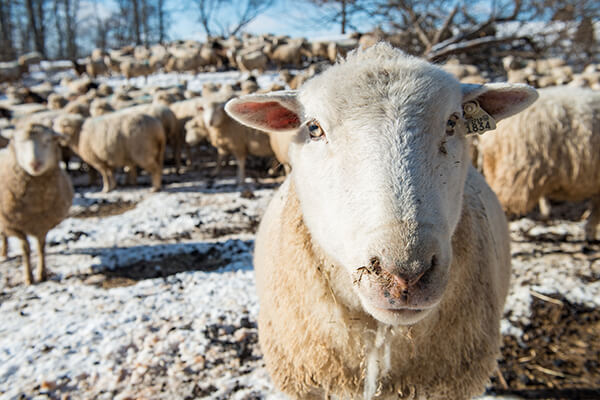
It took only a few months for Akhavan-Tafti’s casual habit of driving the dirt roads of Howell to yield the perfect site just a short hike from their rural home — a 360-acre tract replete with a creek and rolling pastures studded with mature hardwoods. “This is my cathedral,” says Akhavan-Tafti, who christened Full Circle Organic Farm in the fall of 2008 as a tribute to her family legacy, an homage to her agricultural odyssey and a tongue-in-cheek nod to the numerology of the acreage. “I run this operation like my grandparents ran theirs.”
In the half-century since Ruth and Bruce Fawcett made their living and reputation on 200 acres nestled in the lowlands of southeastern Michigan, the number of diversified family farms in the United States has plummeted. Back in 1959, the federal government documented 3.7 million farms. The 2012 agriculture census showed the number of farms had fallen to 2.1 million. Credit national farm policies driven by big tractors, cheap fuel, an emerging industrial food system and a generation of farm kids eager to get jobs in the city. Today the average farmer is close to 59 years old and the number of newcomers to the profession has fallen with each successive census.
To stem the loss of agricultural practitioners, a 2008 farm bill allocated $75 million for education, training, outreach and mentoring programs to recruit beginning farmers — urbanites, people of color, immigrants, veterans returning from military service, women — anyone likely to stick with the job. The money ran out in 2012; in 2014, the latest farm bill provided an additional $80 million, set to run out next year.
Such efforts are a step in the right direction, says third-generation farmer and author Shannon Hayes. But to rebuild the United States’ once-vibrant tradition of civic agriculture, beginning and established farmers alike must start thinking creatively about how to extend their legacy on the land while honoring the unique strengths and passions of those who grow our food.
Tough talk
Hayes was 10 when a reporter asked her father about the future of Sap Bush Hollow Farm, a 160-acre livestock operation in New York State’s Catskill Mountains. Perhaps, the second-generation farmer speculated, his son would one day take over the family business. Two decades later, Hayes had a doctorate in sustainable agriculture and community organizing and had started applying for professorial posts. Her brother was well on his way to a career as a marine biologist. And the farm’s future was getting murkier by the minute.
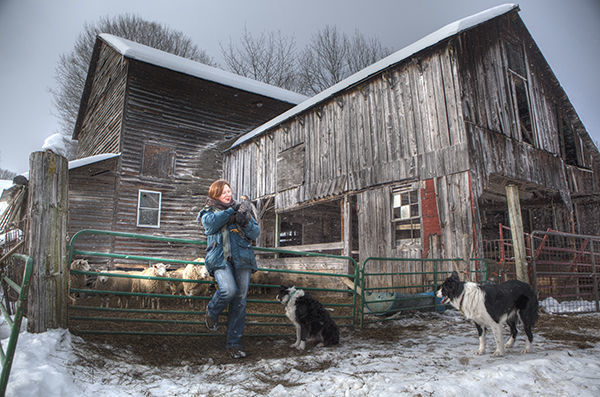
Before they signed on the dotted line for a life in academia, Hayes and her husband took a closer look at the numbers. Taking into account the lifestyle they craved — plus the costs of a second car, professional wardrobes and the like — the tally revealed that a return to Sap Bush Hollow was clearly in their best interest. Hayes phoned her parents to bring them up to speed. “I told them, ‘I don’t think I can afford a job,’” she recalls. “There was dead silence.”
Fifteen years later, Hayes and her husband have grown their family, established a reputation for custom sausages crafted in Sap Bush Hollow’s new on-farm cutting room, launched a custom press to publish her cookbooks and introduced an array of product lines to expand the farm’s income streams. “Farming used to have such a static view,” says the 43-year-old. “Now we know you have to do web design, make business decisions, take entrepreneurial risks and wash eggs. You can’t be static — you have to keep several balls in the air and wear multiple hats.”
Over the last three years, as Hayes’ parents faced a series of health scares, the family stepped up the financial process that would allow the older couple to ease out of daily responsibilities on the farm. The conversations have been brutal. “I broke down every single enterprise and looked at where we were in the black and where we were in the red,” Hayes says. The calculations were a stark reality check; the farm wasn’t pulling enough weight. She told her parents, “If this is my legacy, I don’t want it.”
- Related articles
- Home Grown
- Sustainability, Stewardship and Hands-on Horticulture
- Part-Time Bee Keeper
- Redefining Fast Food
Soon after, Hayes and her father hit on a plan to play to the younger couple’s strengths. They’d buy a vacant building in town, launch a café — with the area’s only espresso bar and a menu featuring Sap Bush Hollow products — and house a much-needed livestock manager in the attached apartment. With a full-time employee on the payroll, Sap Bush Hollow could reduce its reliance on Hayes’ father and expand production to supply the new retail opportunities the café would furnish.
Perhaps the hardest part of taking Sap Bush Hollow in a new direction has been the imperative for Hayes and her husband to divide and conquer on Saturdays, when she works at the café while he handles the farmers market on his own. “There are couples who need to work apart, where one being off-farm is really good for farm stability,” says Hayes. “That’s not who we are.” Growing pains notwithstanding, the new venture seems to be blossoming. The building loan will be paid in full before the café marks its first year in operation, and farm sales have risen by a whopping 50 percent. “They would be up much higher,” says Hayes, “but once we opened a retail store, our business went so far up we didn’t have enough supply to meet demand.”
The Sap Bush Hollow hens, ewes, sows and cows will take a year or two to match supply to demand, and Hayes is confident the pace will be adequate to keep the café in the black. The longer-term question, she says, is what will manifest as her children come of age. On the cusp of adolescence, the two already show signs of skill with livestock and a flair for the café’s demands.
That said, Hayes expects to be on the receiving end of some difficult conversations in the years ahead. “What defines the traits to make a successful next-generation farmer is to know yourself, look at your parents and say ‘I am not you, and I cannot go forward as if I were you,’” she says, “and the parents looking at the child and saying, ‘I accept that.’” As far as Hayes is concerned, the collapse of the intergenerational family farms at the heart of rural communities owes as much to callous disregard for such conversations as it does to issues like national farm policy and the ascendance of the tractor. “How can you be happy carrying on a family business if you’re trying to be something you’re not?” she asks. “You move forward with what uniquely defines you.”
To the seventh generation
Failed succession plans can be explosive, eliminating more than an agricultural legacy when things go bad, says Andy Larson ’02, a certified farm transition facilitator who grew up on a dairy farm in Pecatonica, Illinois, an hour south of Madison, Wisconsin. “There are an awful lot of families that have been blown to smithereens,” he says, “and all sorts of blood relatives who no longer speak to one another because of the way inheritance of a family farm went down.”
Facilitating a farm transition is a lot like being a therapist. “I help families say what they actually want,” says Larson. “If there’s open communication, you’re more likely to get what you want than if you just have the old man with the checkbook decide what the young man with excess labor is going to do.”
His own family has been working the same land since 1874, when his great-great-great-grandparents emigrated from Sweden. When Larson and his brother left for college, the loss of their labor caused his father and uncle to sell off the dairy cows and focus exclusively on their commodity crop and replacement heifer operations. “My dad got outvoted,” says Larson. “His brain still misses milking, but his fused vertebrae don’t.”
Larson spent his high school summers working for Larson Brothers Farm — making hay, mending fences, milking. It didn’t take. “I was more of a conscript than a volunteer,” he says with a rueful chuckle. “I did my best not to learn anything.” It was only after he enrolled at Notre Dame that Larson started missing the farm. As he settled into a dual major in environmental science and anthropology, he couldn’t stop thinking about the land where he’d been raised. “I realized there were things environmental scientists and farmers could do together to improve both,” he says. “At the time, I didn’t realize they were pretty strange bedfellows.”
Larson seems inexorably drawn to such rocky shoals. As an extension educator, he seeks opportunities to bridge the divide between conventional and organic farmers, promote strategies for hobbyists to turn a profit and facilitate farm transitions. In his free time, he’s started a small, pasture-based laying hen operation smack in the middle of the hundreds of acres of commodity crops grown by his family.
When they married, Andy’s wife, Kate Beranek Larson ’04, knew farming would be in the couple’s future. It was only a question of when. After seven years in Ames, Iowa, where Andy worked for Iowa State University Extension, he landed a gig at the University of Illinois Extension as a small farms educator. “It’s dicey when you come out to the boonies and look for a job so you can service school loan debt and raise a family,” he says. “A liberal arts education isn’t a good idea for someone going back to Pecatonica to raise chickens.” Illinois job offer in hand, the couple moved back home, settling into the house to which his grandparents, Kate and Menten, retired when the family dairy transitioned to his father and uncle. “First and foremost we came home in order to be close to the family and the land I was rooted in,” Andy says, “and offer that kind of upbringing for my children.”
The first winter, Kate and Andy shored up and insulated the outbuilding on their 5-acre parcel; in the spring they bought their first flock of laying hens. They named their operation Ten Men Farm, an anagrammed nod to Menten. Each flock of 300 hens remains on the farm approximately 18 months, arriving in spring and departing before temperatures plunge as their second autumn creeps toward winter. With 300 birds to tend in winter, the henhouse provides just enough shelter for the flock and their guard, a territorial donkey named Lucy. At the peak of summer, when incoming and outgoing flocks overlap, Kate and Andy tend 630 birds and collect approximately 580 eggs a day, which they sell to restaurants, a local grocery store and, at $5 a dozen, directly to customers at the Rockford, Illinois, farmers market.
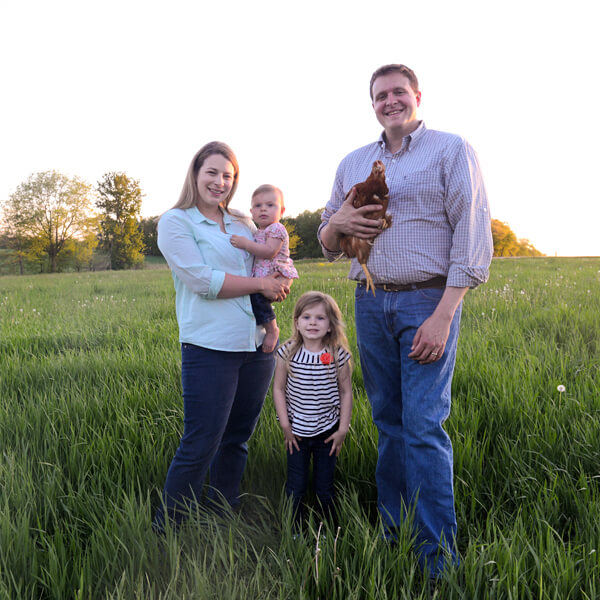
With Andy commuting 40 minutes each way to his full-time post in the county extension office, the couple divides the daily chores. After their older daughter catches the bus to kindergarten, Kate takes the morning shift, accompanied by 3-year-old Alex, who plays with the hens while her mother works; Andy takes the evening shift. After the girls have gone to bed, their parents spend hours grading and packing eggs. The couple saves cleaning out the coops and other major projects for weekends. Kate handles most of the marketing and order fulfillment between the kids’ naps and meal schedules. In lieu of a farm pickup truck, she uses the family minivan. “I show up at the farm store to buy wood shavings and say ‘Let’s fill it up,’” she says. “They look at me like I’m crazy, but I can fit 20 bales in the minivan, with kids.”
For a woman who grew up in the suburbs of Pittsburgh, the shift to a nascent farm operation has been a steep learning curve. Her parents, she says, find it all strange and interesting. A brief stint as a zookeeper after graduation eased the transition, as did her years in Ames as an environmental sciences teacher, using gardening exercises to help her inner-city students get a hands-on feel for the curriculum. And like most greenhorns, Kate relies as heavily on the Internet as the school of hard knocks. “I could just be along for the ride,” she says, “but I’m not. I’ve chosen the farm, and I really enjoy it. I love being at markets, and our customers appreciate what we’re doing.”
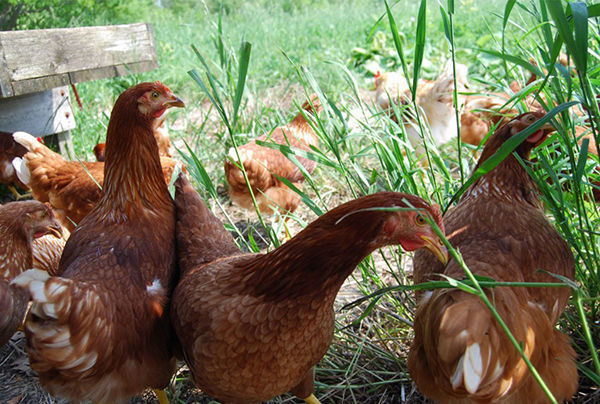
While the operation still has plenty of room to grow, Andy says the venture is yielding a rich synergy in his work as an extension educator. “I wanted the credibility of being in production agriculture when I’m teaching clients,” he says. “It carries a lot of water to say I was raised on a conventional farm and now run a nonconventional farm for alternative markets. Combined with some academic credentials, it works.”
He also hopes the venture will plant a seed with his father and uncle about the future of Larson Brothers Farm, although the question of succession planning isn’t yet pressing.
In the meantime, Kate and Andy are testing what they might bring to the family operation as they learn the ropes at Ten Men Farm. “I can’t walk into my dad’s kitchen and say I want to facilitate our farm transition,” he says. “That would go over like a fart in church.” Instead, he’s building his skills and exploring the local market. “If you’re going to be a successor, you have to have the skill sets of the previous proprietor to extend the business trajectory,” he says, “or at least be familiar enough to understand whether you want to keep doing it.”
Roots rising
Manhattan native Karen Washington was a relative newcomer to the Bronx when she looked out her kitchen window one day in 1988 to see a neighbor struggling in the vacant lot across the street. The derelict site was the epitome of urban blight, a popular haven for all manner of illegal transactions. Equipped with a shovel and a pick, her neighbor had determined to start a community garden. Washington, who didn’t even like eating vegetables, pitched right in.
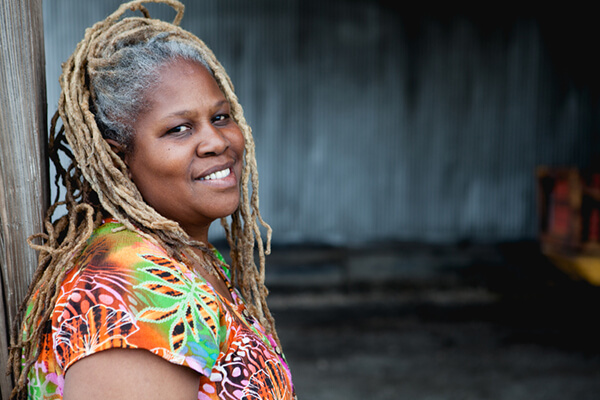
The resulting Garden of Happiness now boasts 36 gardeners and its own page on the New York City Department of Parks & Recreation website. It’s a lush gathering place for a broad swath of the community, with events for people of all ages and a regular farmers market whose vendors include community members offering up surplus that represents food traditions from around the world. A grape arbor spans the entrance, a small flock of hens scratches in the compost, a rainwater-capture system reduces the hazards of drought and a greenhouse shelters delicate seedlings in the weeks before spring breaks.
In the three decades since she and her Puerto Rican neighbor tackled that first vacant lot, Washington has kept honing her vision for the intergenerational, intercultural exchange that blooms around community gardens. She helped launch the City Farms Market, co-founded Black Urban Growers, rose to chair the nonprofit Just Food, and trained at the Center for Agroecology & Sustainable Food Systems at the University of California, Santa Cruz. In 2012, Ebony magazine ranked her — along with Beyoncé and Oprah — among the nation’s 100 most influential African-Americans. In 2014, in its coverage of her James Beard Foundation award for leadership, The New York Times dubbed her urban farming’s “Grand Dame.”
After nearly 40 years as a physical therapist, Washington retired from her day job to devote herself to Rise & Root Farm, a for-profit cooperative in the Hudson Valley formed with three longtime friends who share her passion for food justice. “We spent at least a year going through the pluses and minuses, figuring out what would work,” she says. “It was a lot of traveling, speaking to different farmers, looking at how much money it would take. It has been an eye-opening venture, to say the least.”
Since 2014, the farm has leased three acres from the Chester Agricultural Center in southeastern New York State, where the women raise veggies and cut flowers for sale to chefs in New York City and at farmers markets upstate, in the Bronx and at the flagship Greenmarket in Union Square. It sounds glamorous, says Washington. You can see it in visitors’ eyes when they tour the farm. “You don’t want to take that away from them, but you want them to realize, especially if it’s a for-profit, it’s a lot of work.” She’s tempted not to reveal the harsh realities — their average wage in their second year of full-time farming was $4 an hour. Washington has a retirement income to fall back on; another of the farmers has an established business.
Governed by consensus, the four women meet regularly to determine such details as what they’ll grow and market, and how to allocate their earnings. “It can be painful; the feelings are hard,” she says. “At the end of the day we make sure we engage from a place of love and respect and come to a decision we can all agree on wholeheartedly.”
Neighboring farmers initially were skeptical. “You may not know who we are or what we’re about, but the first thing you know about us is that we’re women,” says Washington, whose golden dreadlocks reach well below her shoulders. “And we were on this land doing this stuff by hand — raised beds, drip irrigation. They were like, ‘What are these city people doing?’” Historically, growers in the area have been plagued by sodden soil that drains too slowly. But in that first season, as drought took hold, the Rise & Root emphasis on soil improvement, weed management and tactical irrigation bore fruit. “In the beginning, they laughed at us. Now we’ve won their respect. Not only were we able to grow the best vegetables and herbs and flowers, but we did it using a walk-behind tractor and our hands.”
At 62, Washington admits her farming years are numbered. Early on, she told her partners they could count on her from April until mid-November; the week before Thanksgiving, she hits the road to reconnect with her Atlanta-based daughter, a Notre Dame graduate, and extended family scattered throughout the South. She teaches classes, writes grant applications, gives lectures and reflects on her vision for the year ahead.
Given Rise & Root’s 30-year lease and the option to buy, Washington is certain it will outlast her farming years. For now, she and her partners pursue collaborations with neighboring small farms, host tours and offer classes on the land, constantly seeking to recruit the next generation of food activists and farmers. “For so long, the reference for people of color to growing food has been the stigma of slavery, hard labor,” says Washington. “Slavery is part of American history, but it doesn’t define who we are as an agrarian people with a rich culture of food and farming. Youngsters want to explore how food is grown, the foundation of seeds, cooking, the importance of culture. It’s powerful to grow your own food.”
Built to last
Like Washington, Akhavan-Tafti knows her farming career has a looming expiration date. Then again, she notes, her grandmother was operating a chainsaw and running her rototiller until she was 97. To optimize her own farming years and the ecological elegance of a grazing operation, Akhavan-Tafti determined to work with ruminants — “they can make food out of anything,” she notes. She initially planned on Angus beefers, like those at her grandparents’ place. Then at an auction her husband saw the hulking cattle towering beside his 5-foot-4 beloved and most adamantly objected. She’s since tailored the operation to a ruminant she can generally handle on her own, making her own physicality a primary factor of the farm plan. “The Egyptians weren’t big,” she says, “they were smart. Usually, I can wrap my head around how to get things done.”
Take, for example, the two times annually when 1,350 hooves on the farm get trimmed. Akhavan-Tafti and a hired helper use an electric trimmer to spare their hands and a contraption akin to a chaise lounge that supports each sheep’s weight while it’s off its feet and reduces human back strain. It takes some work to tip a mature ewe into the chair, but she can manage it. And tractors — the brute force behind the farm’s winter hay stores — further level the playing field. “Large machines don’t require muscle,” says Akhavan-Tafti, who listens to books on tape to pass the time on the tractor. “It’s finesse.”
While she doesn’t have a written succession plan, Akhavan-Tafti treats good stewardship as a solemn duty. She laid nearly four miles of frost-protected lines to insure year-round access to water in each paddock and installed miles of fencing. Two massive barns, designed by her father, were framed and clad in lumber milled on the land, from trees killed by an invasive beetle. A combination of grazing, tactical mowing and seeding — supplemented by regular application of composted bedding from the lambing barn — has improved the pastures and brought the soil back to health. Through meticulous records of breeding history, market weights and animal health, she’s been able to refine the hybrid vigor of her flock. Ewes who fail to tend their young and those who steal lambs all go to butcher. “We keep strong, healthy mothers,” says Akhavan-Tafti, “and we don’t make exceptions.”
She also favors animals with some meat on their bones. In a paddock of yearling lambs, Baby, a 5-year-old wether, comes to check Akhavan-Tafti’s pockets. An orphan whose months of hand-feeding earned him a moniker and permanent residency on the farm, Baby samples a bit of stale scone as the shepherdess sinks her fingers into his wool, feeling for the mass of stored fat and muscle that spans his hips. On the five-point scale ranging from emaciated to obese that shepherds use to assess their animals, Akhavan-Tafti aims for a three. Baby — perhaps owing to the special treats he begs — is a four.
Every year, from April 15 until June 15, Akhavan-Tafti and her crew labor from 5 a.m. to 11 p.m., welcoming as many as 500 newborns to Full Circle. As the lambs reach market weight in November and December, she sends every male and all but the best females — those destined for breeding stock — to auction. Her full-time helper earns the equivalent of a teacher’s income; Akhavan-Tafti plows her earnings back into the operation. “I have never worked at something this hard,” she says, but to her the intangibles make it all worthwhile. “In my cathedral, the sermon is very uplifting. Every day I’m practicing what’s really important to me.”
Beginning farmer Sharon Tregaskis reports on healthcare and the environment; with her partner, she operates Tree Gate Farm, a small vegetable and fruit operation in New York’s Finger Lakes Region.
